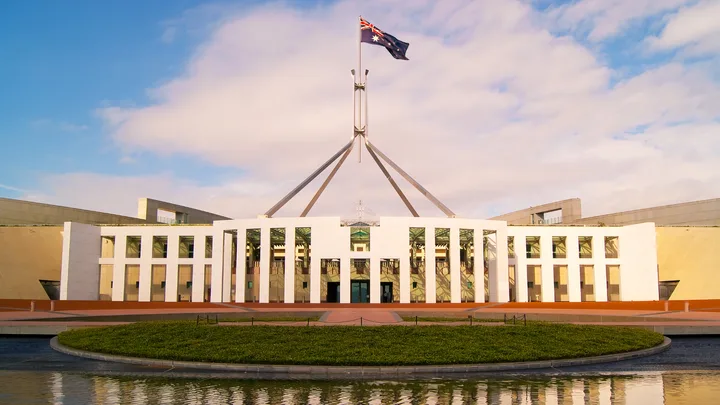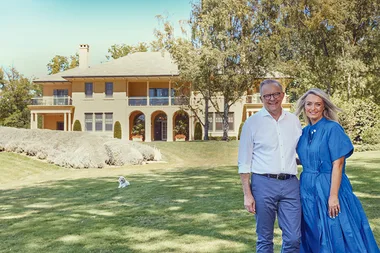As the 2025 Australian Federal election looms, women across Australia are watching closely, not just for promises on taxes or housing, but for answers to everyday challenges such as the rising cost of living and access to healthcare.
Both Labor and the Liberal-National Coalition (LNP) have unveiled major policies — some directly targeting women, others with more subtle implications. If you want to ensure that your Member of Parliament (MP) is pushing the agendas that you want, be sure to check out They Vote For You.
Here’s what’s on the table from the two major parties: Labor and Liberal-National Party (LNP/The Coalition):
What’s promised for health?
Both parties have made several promises in regards to health overall, however, in varying levels of detail.
Labor
- Ahead of the election campaign, Labor announced a $8.5 billion Medicare funding boost, to triple GP bulk-billing incentives and aim for 90 per cent of GP visits to be bulk-billed by 2030.
- A landmark $573.3 million women’s health package, including higher Medicare rebates for long-acting contraceptives like IUDs and implants; expanded access to care for endometriosis, menopause and perimenopause; and new women’s health clinics from 22 to 33 around the country.
- Matching the LNP’s $400 million GP training plan, including 2,000 new GP trainees annually and more nurses.
- $1 billion to build (or upgrade as needed) mental health facilities and to provide training to 1200 new workers in the area; $90 million for 1200 new mental healthcare providers; $500 million for 20 youth care centres.
- $46 million for digital mental health services.
- $644 million to open 50 new urgent care clinics by mid-2026, mostly in NSW, Victoria, and Queensland.
- PBS medicine prices cut from $31.60 to $25, costing $690 million.
Coalition:
- The LNP has promised to match Labor’s plans, including the $8.5 billion for Medicare funding, the $573 million package for women’s healthcare and the PBS price cuts.
- $400 million for junior doctor incentives and leave entitlements to encourage careers in general practice.
- Increase 10 subsidised mental health sessions to 20.
- $5 million review of women’s healthcare services and medications to identify service gaps.

What’s on the cards for housing?
Australia is well and truly in the midst of a housing crisis. Both parties have made promises with regard to housing in response to the issue. Whether they can solve it or make it worse…only time will tell.
Labor:
- $10 billion funding commitment to build 100,000 homes earmarked for first home buyers.
- 5 per cent deposit option for first home buyers, with Commonwealth guarantees waiving lenders’ mortgage insurance (LMI)
- Maintain its $10 billion Housing Australian Future Fund.
- Expand its Help to Buy Scheme, where the government takes an equity stake in the property. Increase eligibility to include singles who earn under $100,000, couples who earn under $160,000, and higher property price caps.
- Matched Coalition’s promise to ban foreign investors and temporary residents from buying existing homes for two years (new builds excepted).
Coalition:
- Tax deduction on mortgage interest for first home buyers of new builds — up to $650,000 over five years, saving an average family around $55,000.
- Access up to $50,000 from superannuation to buy a first home — however, it must be repaid if the home is sold.
- Relax lending rules to enable first homebuyers to get approved for loans at a smaller “serviceability” buffer.
- The aforementioned ban on temporary residents and foreign investors for two years.
- Scrap Labor’s Housing Australia Future Fund.
- $5 billion infrastructure fund to fast-track essentials (e.g. water, power) at development sites, aiming to unlock 500,000 new homes.
- 10-year freeze on National Construction Code changes to boost housing supply and investor certainty.
What’s pledged for tax and cost of living?
The top of the list for many voters is the cost of living. Both parties have very different plans on how they think they can bring costs down for Australians.
Labor:
- In Labor’s Budget 2025/26, it outlined a tax cut that would be introduced in 2026-27, which works out to about $5/week, which doubles to $10/week the following year.
- $150 power bill rebate for households and small businesses, applied from July 2025 in two instalments.
- $1000 deduction on workers’ expense claims from 2026-27
Coalition:
- The biggest selling point of LNP’s budget proposal was its promise to halve the fuel excise for 12 months, with a 25c per litre price cut, which could save drivers about $14/week.
- LNP has also promised a temporary tax offset of up to $1200 for those earning less than $144,000 for the 2025-26 financial year.
- The LNP has promised not to oppose Labor’s power bill rebate, but has promised to reverse its legislated tax cuts.
- Scrap $16+ billion in tax credits for critical minerals and green hydrogen under Labor’s “Future Made in Australia” policy.
- Up to $20,000 in tax deductions for small businesses on business-related meal expenses.
- Increase instant asset write-off cap from $20,000 to $30,000 for small business asset purchases.

What is promised for energy and climate?
Australia in recent years has endured droughts, floods, cyclones, bushfires and more. The climate is changing, and we need to change with it. But how does our government plan to tackle the energy debate?
Labor:
- Aiming to have 82 per cent of Australia’s energy needs supplied by renewables by 2030, with gas providing the rest.
- Labor has an emissions reduction target for 2030 (43 per cent) and 2050 (net zero).
Coalition:
- Nuclear power is how the LNP believes it can solve Australia’s energy woes. It promises that it would cost $331 billion, and the seven proposed plants would be operational within the next two decades. However, there are plenty of caveats to their plans: no concrete locations are selected, the cost for the plan is based on less energy needs than what Australia currently has, and a smaller economy. There’s also the issue of the water required to cool reactors.
- In the meantime, it has pledged to increase gas production by requiring gas companies to reserve 20 per cent of Australian gas in Australia via its east coast gas reservation plan.
- A $1 billion fund is earmarked for infrastructure expansion, i.e. maintain coal plants and expand gas infrastructure.
- Fast-track approval of Woodside’s North West Shelf gas expansion within 30 days of taking office
- The LNP has promised to scrap the New Vehicle Efficiency Standard, which sets emissions caps and penalties for car manufacturers.
- It has also promised to axe Labor’s $20 billion Rewiring the Nation Fund (which is getting the network ready for renewables).
- Defund the Environmental Defenders Office.

What are the parties promising regarding education?
In this election, there will be more Millennials and Generation Z than ever before. These generations are the ones most hit with education debt. As a result, Labor has made education a major point in its campaign.
Labor:
- Biggest promise in relation to education: Forgiving $16 billion in student debt on June 1, 2025, which works out to be about a 20 per cent cut for those on a HECS-HELP or similar loan.
- Additionally, people will not have to pay back their loans until they are earning at least $67,000 from July of next year.
- Double incentive payments for apprenticeships in the housing industry to $10,000.
- Fee-free TAFE places.
- $1 billion funding package to expand and construct 160 childcare centres across the country over four years. The centres would be government-owned and be located on or near school grounds.
Coalition:
- A target of 400,000 apprentices and trainees, with incentives for businesses to have those positions ($12,000 for the first two years of training).
- $260 million committed to creating a network of technical colleges, 12 earmarked for the LNP’s first term.
- $3.8 million for its “Ready to Read” program to support early childhood literacy.
What’s promised for workers?
At the beginning of the campaign, working conditions and policies were all we could talk about. Much was made of Peter Button’s promise to mandate a return to office policy, and then proceed to say he would live in Kirribilli House — effectively saying he would work from home! The LNP have since walked back their promises.
Labor:
- Introduce a ban on non-compete clauses for employees earning less than $175,000 a year.
- A promise to protect penalty rates.
- Strong backing for flexible and remote work rights, resisting moves to force full-time office returns.
- Mandatory gender pay gap reporting for large companies and gender equality targets, and transparency in leadership roles.
- Promise to scrap the childcare activity test and replace it with a guarantee of three days of subsidised care for families every week.
- Extend asset write-off limit of $20,000 for an additional 12 months.
- $2 billion (production credits) for aluminium smelters who use renewable energy in their processes.
Coalition:
- As mentioned, the LNP initially proposed a full-time return-to-office mandate for public servants, later scaled back to Canberra-based workers. It has now fully scraped that initiative.
- Reduce the public service by 41,000 employees over five years via a hiring freeze and voluntary redundancies.
- Re-establish a watchdog for the construction industry, which Anthony Albanese scrapped in 2023.
- Repeal Labor’s “right to disconnect” law.
- Introduce anti-racketeering laws.
- Simplify the definition of a casual employee.
 Canva
Canva



